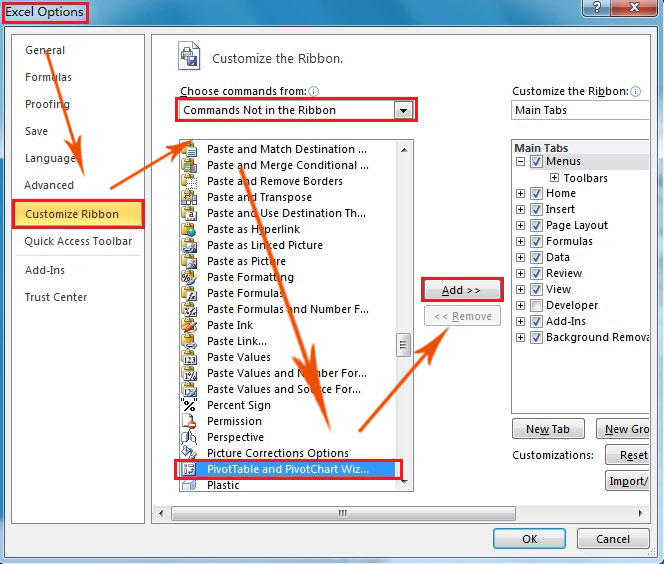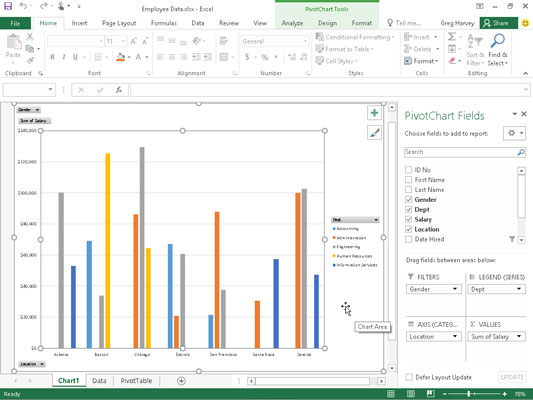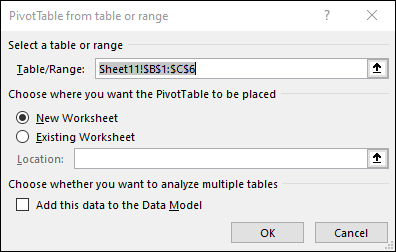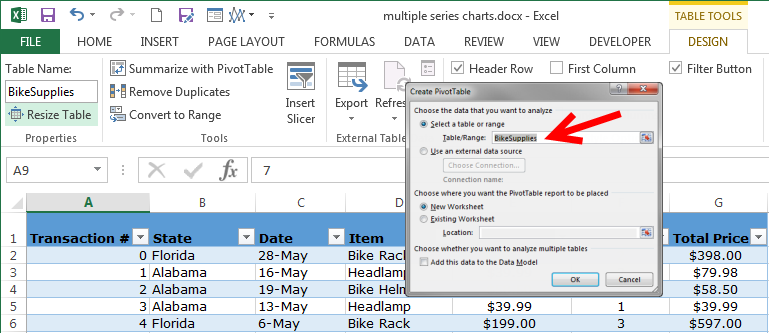

- #Building a pivot table in excel 2013 for mac update
- #Building a pivot table in excel 2013 for mac full
- #Building a pivot table in excel 2013 for mac mac


People love slicers," said Indiana University professor Wayne Winston, who also advises Dallas Mavericks owner Mark Cuban on basketball stats. "Anybody who sends you a pivot table without slicers, you should teach them slicers in 30 seconds. Several of the presenters at the Data Insights Summit suggest using slicers instead. However, trying to filter data with that small drop-down when you've got a large number of items can be somewhat cumbersome. Filter table data with slicersĮxcel tables offer drop-down arrows next to each column header for easy sorting, searching and filtering. This can be handy if your data column is quite long. If you want to select an entire column that's not in a table with just the cells that have data in them, put your cursor in a column next to it, hit Ctrl-down arrow, use the right or left arrow key to move to your desired column, and then hit Ctrl-Shift-up (use command instead of Ctrl on a Mac). For table data, the selections stop at the table's borders. Note that if your data isn't in a table, these selections go beyond available data and include any empty cells beyond. Whether or not your data is in a table, there are a couple of handy selection shortcuts you can use: Shift+spacebar selects an entire row and Ctrl+spacebar (or control+spacebar for a Mac) selects an entire column. If your cursor looks like a cross when you do so, you'll get a reference to just that lone cell, not to the whole column. Note: It's important to make sure your cursor looks like a down arrow before you click on the column name.
#Building a pivot table in excel 2013 for mac full
That will give a reference to the full column by name - useful if you later add more rows to the table, because you won't have to readjust a more specific reference such as B2:B194. If your data is in a table and you need to refer to an entire column in a new formula, click on the column name. Note that you'll need to create a total row for each column individually creating a sum for one column won't automatically generate sums for the rest of your table (since not all columns may have the same type of data - a sum for a column of dates wouldn't make much sense, for example). This can be quite handy if you're doing a lot of data exploration. While you could certainly insert this information into a spreadsheet manually with a formula, putting the info in a Total Row means it's "attached" to your table but will stay in the bottom row regardless of how you then might choose to sort your table data.
#Building a pivot table in excel 2013 for mac mac
You can add a summary row to a table in the Design ribbon on Windows or the Table ribbon on a Mac by checking "Total Row." Although it's called Total Row, you can select from a variety of summary statistics, not just a total sum: count, standard deviation, average and more. Your future self will thank you if you need to access that information from a new, more complex workbook. If you've been creating tables from your data by going to the Excel ribbon, clicking Insert and then Table, there's an easy keyboard shortcut: After first selecting all your data with Ctrl-A (command-shift-spacebar for Mac), turn it into a table with Ctrl-T (command-T on Mac).īonus tip: Make sure to rename your table to something related to your specific data, instead of leaving the default titles Table1 or Table2.

#Building a pivot table in excel 2013 for mac update
In addition, if you make charts from your data, using a table means the chart will automatically update if you add new rows. Tables make it easier to sort, filter and visualize, as well as add new rows that maintain the same formatting as the rows above them. Tables are among the most useful features in Excel for data that is in contiguous columns and rows. So if you've got Power Query on an earlier version of Excel on Windows, a lot of these tips will work for you as well, although they may not work on Excel for Mac.) 1. And many of the query options in Excel 2016's data tab come from the Power Query add-in for Excel 20. (Note: Keyboard shortcuts will work for the 2016 versions of Excel, including Mac those were the versions tested. Want to get more out of Excel? At Microsoft's inaugural Data Insights Summit last month, several experts offered a slew of suggestions for getting the most out of Excel 2016.


 0 kommentar(er)
0 kommentar(er)
